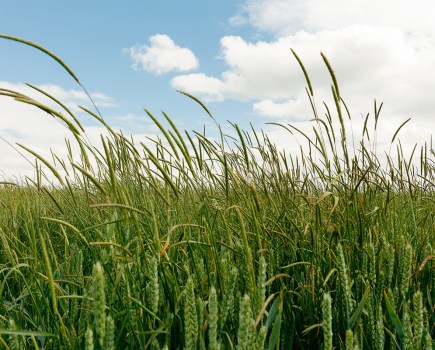By Guy Smith
Being a coastal farm brings benefits and burdens – it means you get more wind and less rain as storm clouds rush to the magnetic attraction of the sea. So in September, while the English interior was suffering from endless inches of rain, we ended up with a paltry 20mm.
Usually that means drought stricken oilseed rape seed and seedlings which get the worst possible start to life. By the time flea beetle have had their fill, the effect on the crop is miserable, costly and terminal.
But this year we’ve finally given up trying to grow OSR and have switched to SFI options instead. While these mixes haven’t been helped by the dry September, fortunately there’s plenty of time left for them to establish.
The other thing that being a coastal farm brings is exotic neighbours. To the immediate south of the farm we have two reserves which adjoin each other – one is a naturist beach reserved for nudists, while the other is a wildlife reserve for naturalists. I have to admit, I sometimes struggle to remember which is which when it comes to naturists and naturalists.
My grammatical instincts tell me that naturalists prefer life ‘au natural’ and naturists are interested in the nature. This mix-up is a fundamental error which could lead to the fully-clothed innocently strolling around with a pair of binoculars and notebook to be confronted by folk without a stitch on.
I should quickly add that this has never happened to me because I’ve never set a foot on St. Osyth nudist beach, nor have I trained my binoculars on it. This is partly because I’m not that way inclined and also because I’ve heard the ugly rumours.
As such, my focus is firmly on the wildlife reserve. It never ceases to amaze how the wildlife lobby and the media, particularly the BBC, maintain a strictly polarised twin track when it comes to farms and wildlife reserves. While farms are portrayed as barren wastelands devoid of all wildlife, in contrast, the neighbouring reserves are seen as seen rich havens awash with bio-diversity.
In short this isn’t just an exaggeration, it’s blatantly untrue. This wild distortion is a result of the careful politicking of the wildlife lobby. On the one hand, they feel they have to promote the idea that the wildlife of the UK is in a state of crisis, while at the same time insisting this certainly isn’t true of the reserves run by the same wildlife lobby. Hence we hear of exciting news of the return of species such as sea eagle and otter on wildlife reserves, while in the same breath we hear that UK wildlife is a fraction of its former self.
You hear the word ‘extinction’ bandied around with increasing regularity. But the fact of the matter is, the only British mammal to become extinct in recent times is the copyu, and that was because it was the subject of a government eradication programme – not forgetting it wasn’t native in the first place – it was introduced from Brazil 100 years ago.
What’s probably more serious is when you hear Defra blindly cutting and pasting this tale of doom and gloom into its own rhetoric. Given this institutional bias, the key question is who is to act as judge and jury when it comes to the current proposition that farmers should be paid for the delivery public goods, a key metric of this being wildlife numbers?
I was struck recently by a key conclusion drawn by Nuffield Scholar Chris Taylor, who looked at the net zero challenge for UK agriculture. Chris identified soil organic matter as a key metric here, but wryly and wisely noted that ‘The best time to sample fields for organic matter was 20 years ago, the second best time is now’.
Similarly, I’d suggest it to farming’s detriment that during recent decades very few farmers took the trouble to undertake regular wildlife audits. Maybe with the policy sea change at Defra, farmers ought to be more proactive when it comes to establishing the status of wildlife on their farms, rather than the current practice based on bias confirmation by the wildlife lobby.
This article was taken from the latest issue of CPM. For more articles like this, subscribe here.
Sign up for Crop Production Magazine’s FREE e-newsletter here.




